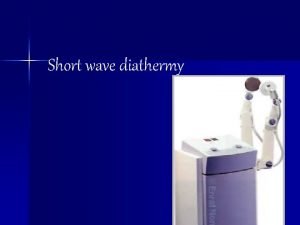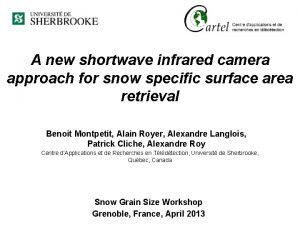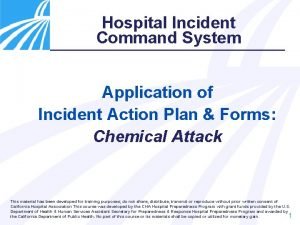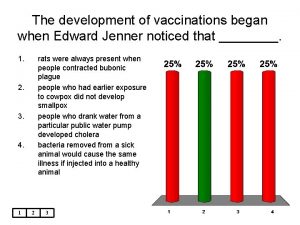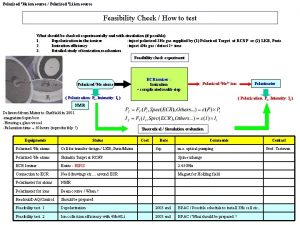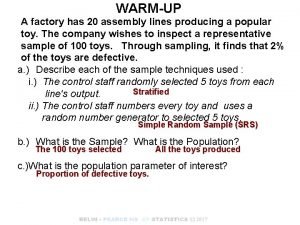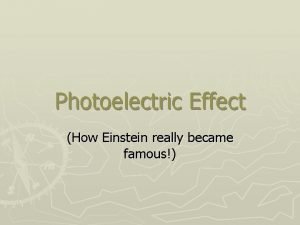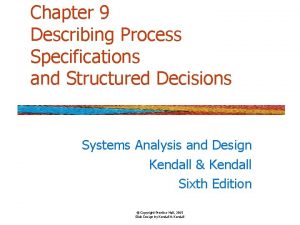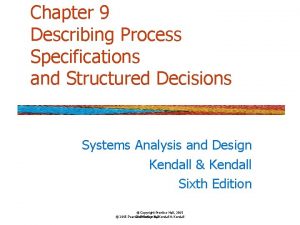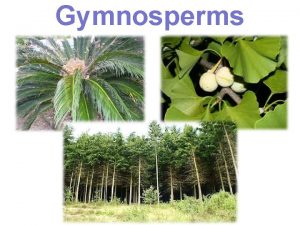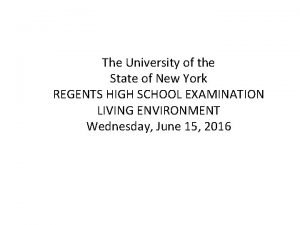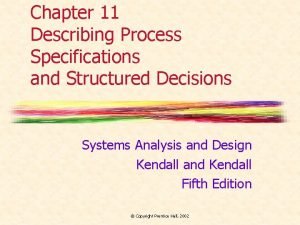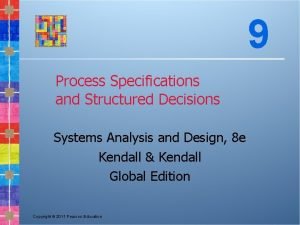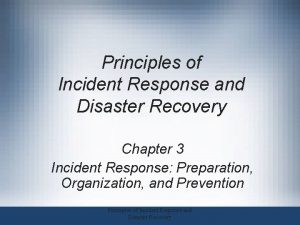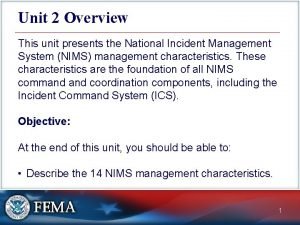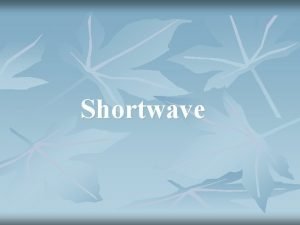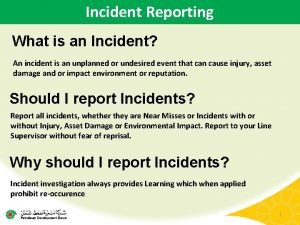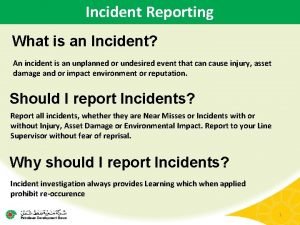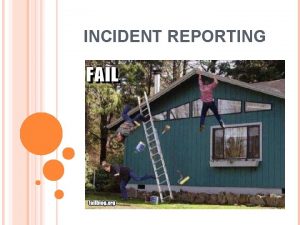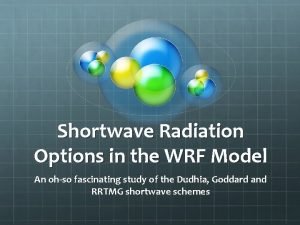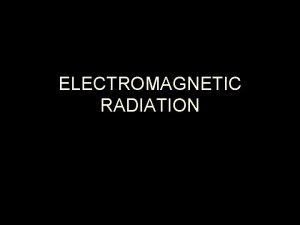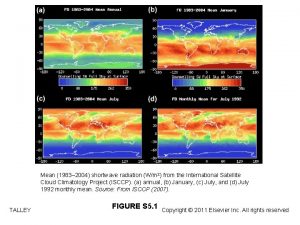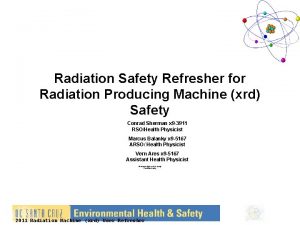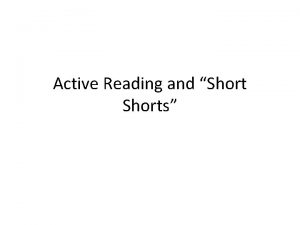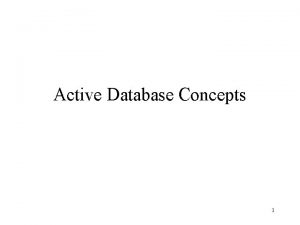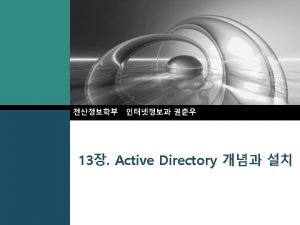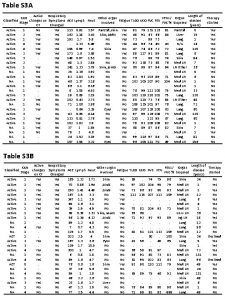Producing Incident Shortwave Radiation and Photosynthetically Active Radiation

























- Slides: 25

Producing Incident Shortwave Radiation and Photosynthetically Active Radiation Products Over Land Surfaces from MODIS and Multiple Geostationary Satellite Data Drs. Dongdong Wang, Tao He Yi Zhang, Meredith Brown Prof. Shunlin Liang University of Maryland May 21 2015 1

Outline • • Importance of insolation and PAR Objective and major tasks Progress and current status Summary of recent researches – Use of hyperspectral data – New optimization method – Temporal scaling of daily shortwave radiation • Timetable and future work • Summary 2

Trenberth et al. (2009)

Need for high spatial resolution products • Current global radiation products have coarse spatial resolution (>1°) primarily for atmospheric modeling, and do not account for many local features, such as urbanization. • Land applications require the high spatial resolution (~1 km) but the reasonable temporal resolution (e. g. , daily): – Ecosystem modeling (say, MOD 17 NPP product) requires high-resolution products of PAR(1 km); – Hydrological modeling (ET, MOD 16) at 1 km; – Other applications (e. g. , drought monitoring, clean renewable solar energy).

Incident shortwave radiation and PAR products Current global incident shortwave radiation satellite products Insolation products ISCCP GEWEX-SRB CERES Spatial resolution 280 km 1° 140 km Temporal resolution 3 -hour Temporal range 1983 -2008 1983 -2007 1997 -present WMO requirements for surface downward shortwave irradiance Global NWP Agricultural Meteorology Climate-AOPC Uncertainty goal (Wm-2) Uncertainty threshold (Wm-2) Horizontal resolution goal (km) Horizontal resolution Threshold (km) 1 N/A 20 N/A 10 1 100 20 5 10 25 100

Accuracy of current data sets of incident shortwave radiation Gui, S. Liang, K. Wang, and L. Li, (2010), Validation of Three Satellite-Estimated Land Surface Downward Shortwave Radiation Datasets, IEEE Geoscience and Remote Sensing Letters, 7(4): 776 -780

Objective and major tasks Objective: to produce global high-resolution (5 km, 3 -hours) incident shortwave radiation and PAR over land surfaces from Terra/Aqua MODIS and a series of geostationary satellite data. Figure. Daytime MODIS overpass counts from both Terra and Aqua and coverage of the current geostationary satellites. Major tasks: 1. ATBD improvement and code delivery 2. Evaluation of sensor radiometric calibration 3. Algorithm validation 4. Product quality assessment 5. Product validation 6. Outreach and product advertisement 7

Algorithms for retrieving PAR and insolation The basic procedure is composed of two steps: (1) determination of the surface reflectance from observations under the “clearest” atmospheric conditions in a temporal window; (2) calculation of incident PAR from the determined surface reflectance and TOA radiance/reflectance using the LUT approach. 8

Sensitivity study of the algorithms Water vapor and ozone concentration Atmosphere profile Tropical, MLW, MLS, AW, AS, and 1976 US represent the tropical, midlatitude winter, mid-latitude summer, Arctic winter, Arctic summer, and 1976 US standard atmosphere profiles, respectively. Zhang et al. , RSE, 2014 Elevation 9

Validation of the proposed algorithms 34 field stations of radiative fluxes 24 of them have PAR measurements Comparison with existing products 10

Current status of surface downward radiation product development Total land surface shortwave downward radiation (W/m 2) of part of Asia and Oceania on GMT 0530, Jan 2 nd, 2010, derived from MODIS and MTSAT data. Software package: Ø Data preprocessing • I/O, re-projection, radiometric calibration Ø Main algorithm • Liang et al. 2006; Zhang et al. 2014 Ø Data post-processing • Data fusion, mosaic Ø Ancillary data • Water vapor, DEM ATBD preparation 11

Estimating surface radiation from hyperspectral data: AVIRIS • Airborne Visible Infra. Red Imaging Spectrometer (AVIRIS) is a airborne hyperspectral sensor. • It has 224 spectral channels with wavelengths from 400 to 2500 nm. • AVIRIS is used in NASA Hysp. IRI Preparatory Airborne Campaign. • We are funded by NASA to estimate quantities surface radiation budget (including land surface albedo) from Hysp. IRI-like data. http: //aviris. jpl. nasa. gov/data/image_cube. html 12

Fine-resolution AVIRIS data helps understand uncertainties in validation with scattered clouds in the coarse resolution data Detection of cloud/shadow from AVIRIS data: (a) True color composite of AVIRIS data at site US-Ca. V on DOY 187, 2009; (b) detection results of the AVIRIS data (land: red; cloud: green; 13 shadow: blue).

Advantages of hyperspectral information in net shortwave radiation estimation Method A Statistics of NSR direct estimation based on simulation data Conversion of cumulated radiation from AVIRIS bands to shortwave radiation (W/m 2) Method B 14

Estimation surface downward radiation and surface albedo from AVIRIS (Method A): topographic correction Surface downward radiation Before correction After correction Shortwave albedo before correction Shortwave albedo after correction 15

Shortwave downward and net radiation estimation: AVIRIS (a) (He et al. 2015, RSE) (c) (b) Comparison of ground measurements AVIRIS downward radiation (a) and net radiation from Method A (b) and Method B (c) estimates (W/m 2) at Ameri. Flux sites. 16 Two methods had similar estimation accuracies. N is smaller in (b) than that in (c) because surface albedo estimates were not available under cloud/shadow conditions.

An optimization method for estimating surface downward shortwave radiation • Assumption – Surface BRDF and AOD stay relative stable for a short period of time window. • Algorithm – Simulating atmospheric radiative transfer with Qin’s (2001) non-Lambertian parameterization method – Using climatology of BRDF and surface albedo as first guess in optimization – Estimating surface downward radiation using the optimized BRDF and AOD as inputs • Validation – One year data of 2005 for 7 SURFRAD sites 17

Flowchart and Validation TOA Reflectance Prior AOD Radiative Transfer Model Prior BRDF Optimization Optimal BRDF and AOD LUT Estimate Surface Downward Radiation Surface Elevation Water vapor Solar Zenith Angle 18

Estimation of daily surface shortwave net radiation (SSNR) • Shortwave net radiation is equivalent to incident solar radiation, given land surface albedo. • To develop a more robust high-resolution solar radiation product, we investigated an alternative algorithm for estimating daily shortwave net radiation from MODIS data. • The morning Terra MODIS data were combined with the afternoon Aqua MODIS data to improve the mapping of intra-daily variations in atmospheric conditions. • The synergy of the two MODIS sensors reduced the errors in daily SSNR estimates by 6 -7 W/m 2. 19

Scale effects in validating SSNR The impacts of window size on the validation results of satellite radiation quantities: a) daily SSNR, b) monthly SSNR and c) surface albedo. Wang et al. TGRS, in press 20

Validation results Figure. Comparing field measurements of daily surface shortwave net radiation at seven SURFRAD sites with four data sets: a) MODIS, b) CERES, c) ERA-Interim and d) NARR. MODIS data are averaged from a 71 km by 71 km window centered at the sites. 21

North American maps of daily surface shortwave net radiation on June 9 2009 from a) MODIS, b) CERES) c) ERA-Interim and d) NARR. 22

Timetable and future work • ATBD and software delivery • Continuing algorithm improvement • Extensive algorithm/product validation 23

Reference • • Wang, D. , Liang, S. , He, T. , & Shi, Q. (2015). Estimation of daily surface shortwave net radiation from the combined MODIS data. IEEE Transactions on Geoscience and Remote Sensing. In press. Wang, D. , Liang, S. , He, T. , & Shi, Q. (2015). Estimating clear-sky all-wave net radiation from combined visible and shortwave infrared (VSWIR) and thermal infrared (TIR) remote sensing data. Remote Sensing of Environment. In press. He, T. , Liang, S. L. , Wang, D. , Shi, Q. , & Goulden, M. L. (2015). Estimation of highresolution land surface net shortwave radiation from AVIRIS data: algorithm development and preliminary results. Remote Sensing of Environment. In press. Wang, D. , Liang, S. , He, T. , Cao, Y. , & Jiang, B. (2015). Daily surface shortwave net radiation estimation from Feng. Yun-3 MERSI data. Remote Sensing, 7, 6224 -6239, doi: 10. 3390/rs 70506224. Wang, D. and S. Liang (2014). Mapping High-Resolution Surface Shortwave Net Radiation From Landsat Data. IEEE Geoscience and Remote Sensing Letters 11(2): 459 -463. Liang, S. L. , Zheng, T. , Liu, R. G. , Fang, H. L. , Tsay, S. C. , & Running, S. (2006). Estimation of incident photosynthetically active radiation from Moderate Resolution Imaging Spectrometer data. Journal of Geophysical Research. Atmospheres, 111 Zhang, X. T. , Liang, S. L. , Zhou, G. Q. , Wu, H. R. , & Zhao, X. (2014). Generating Global LAnd Surface Satellite incident shortwave radiation and photosynthetically active radiation products from multiple satellite data. Remote Sensing of Environment, 152, 318 -332 24

Summary • The major tasks have been performed as scheduled. • We expect to deliver the codes and ATBD by the end of this year. • We have investigated several related issues and explored new methods for further improvement: – Scaling issues in validation; – New optimization method; – Application of hyperspectral data; – Temporal scaling of daily SSNR. 25
 Thank you
Thank you Precautions of swd
Precautions of swd Shortwave infrared camera
Shortwave infrared camera Incident objectives that drive incident operations
Incident objectives that drive incident operations Boolean operators
Boolean operators Primary active transport and secondary active transport
Primary active transport and secondary active transport Primary active transport vs secondary active transport
Primary active transport vs secondary active transport A vaccination for smallpox was developed in 1796 by ____
A vaccination for smallpox was developed in 1796 by ____ An ion source is producing 6li ions
An ion source is producing 6li ions What is factor isolating questions
What is factor isolating questions A factory has 20 assembly lines producing
A factory has 20 assembly lines producing Kumar is producing the photoelectric effect by using
Kumar is producing the photoelectric effect by using Process specification example
Process specification example A goal of producing process specifications is to
A goal of producing process specifications is to Seeded vascular plants
Seeded vascular plants Producing for dummies
Producing for dummies Gametophytes have gamete-producing organs called _____.
Gametophytes have gamete-producing organs called _____. An individual eats a hamburger. which two systems
An individual eats a hamburger. which two systems A goal of producing process specifications is to:
A goal of producing process specifications is to: Structured decision in system analysis and design
Structured decision in system analysis and design Long-term assets
Long-term assets Processing crime and incident scenes
Processing crime and incident scenes Principles of incident response and disaster recovery
Principles of incident response and disaster recovery Which nims management characteristics includes developing
Which nims management characteristics includes developing Incident and problem management definition
Incident and problem management definition Principles of incident response and disaster recovery
Principles of incident response and disaster recovery

